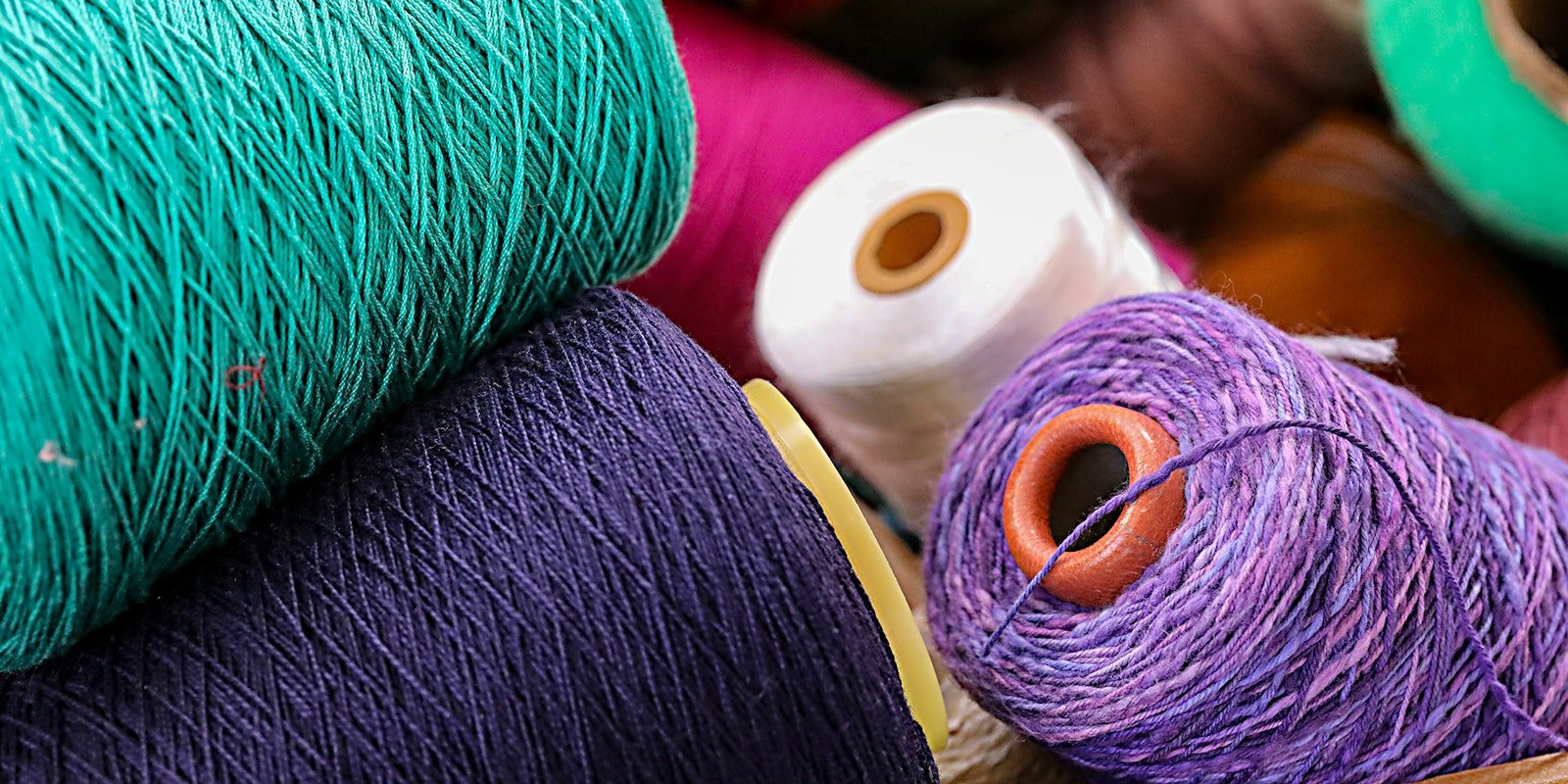Hi Madelyn!
I'm considering mixing cotton and acrylic in my weaving.
I have only one cotton yarn and many acrylic colors, and I would like to use them together.
Can I warp with cotton and use acrylic yarn for the weft? Or, conversely, can I warp with acrylics and weave with cotton? Would one be better than the other?
—Ana
Hi Ana!
When you consider mixing fibers in a weaving project, you generally have to take into account their relative degree of shrinkage.
In the case of cotton and acrylics, cotton is likely to shrink more than acrylic, but not by very much. If you use cotton in the warp and an acrylic in the weft, the fabric may shrink more in the warp direction than in the weft direction. The degree of difference will depend on the density of the weft: The more firmly the fabric is beaten (the greater the number of picks per inch), the less room the warp has in which to move during wet-finishing and the less shrinkage you’ll see. If you use acrylic in the warp and cotton in the weft, the cloth will shrink slightly more in the weft direction (I'd guess about 10%, again depending on the specific yarn and the density of the warp).
Relative shrinkage is important to know for yarns, especially for those that are more different from each other than cotton and acrylic. One way to gain an idea of relative shrinkage is to bundle some lengths of each yarn and tie each bundle with knots at both ends (I usually also make a tie in the middle). Measure the lengths of the bundles, wash them the way you plan to wash the final product, and measure them again when they’re dry. Compare the wet-finished lengths with the original lengths to determine the percent of shrinkage to expect from each fiber.
Here’s another approach to minimize problems when weaving with two different yarns—mix them thoroughly in both warp and weft. If you alternate one end of acrylic with one of cotton, for example, the yarns help each other reach a kind of compromise in the amount of shrinkage. Sometimes if one shrinks a lot more than the other, the resulting effect is an added but pleasing texture.
In any case, I think you can mix acrylic and cotton without much worry, regardless of which goes in the warp and which in the weft.
—Madelyn
If you have a weaving question please email Madelyn! View related & recent "Ask Madelyn" posts!

